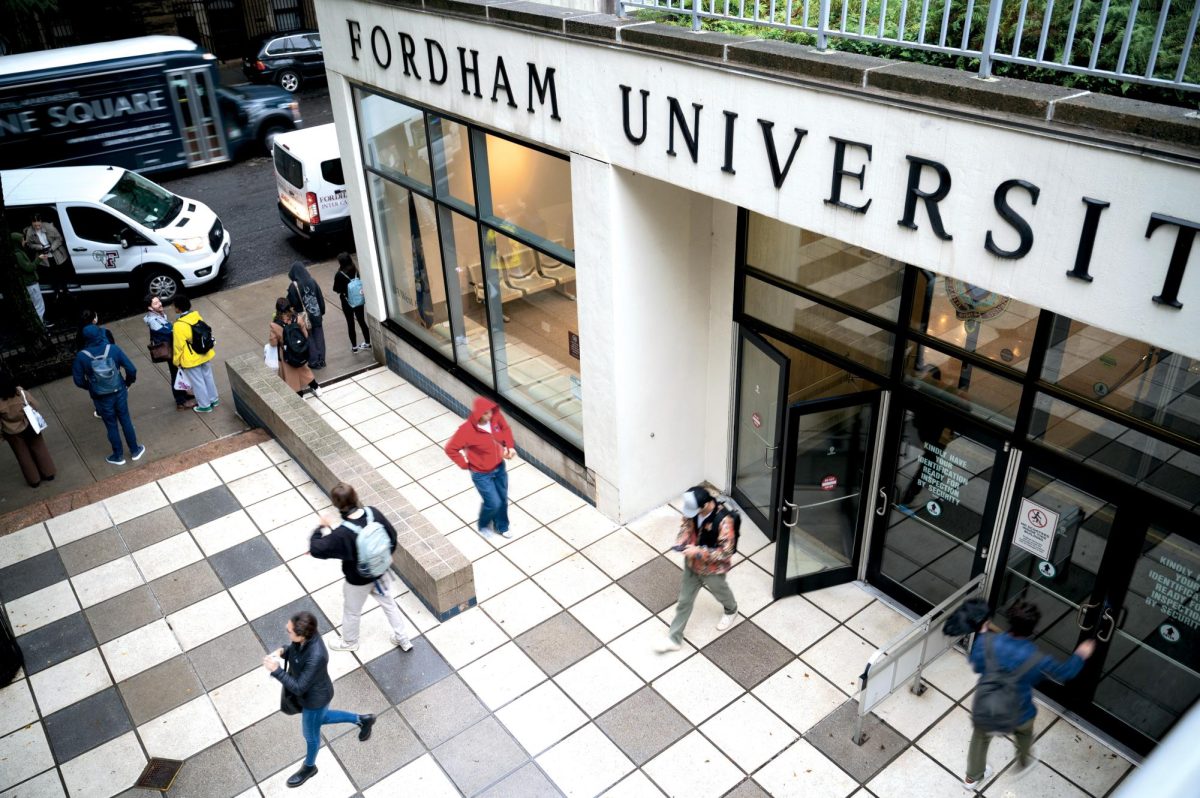Fordham University was ranked 89th out of 1,500 universities in the U.S. News and World Report’s annual “Best National University Rankings.” The results were released on Sept. 18 and Fordham fell 17 places from the previous year, dropping from 72 to 89.
The university has been on a decline for the past couple of years, but the 2024 ranking comes after the company made changes to its rating criteria, which now emphasize social mobility and eliminate some factors such as class size.
In the 2021-22 academic year, Fordham placed 68th among top national universities and only fell slightly the following academic year in 2022-23, placing 72nd. This year’s rank, however, has been a larger fall and ties Fordham with the University of Southern Florida, Temple University and Southern Methodist University.
Within the U.S. News and World Report’s more specific categories, Fordham placed 31st in best undergraduate teaching, which is gauged through a peer-evaluation survey filled out by college administrators. The university also ranked 163rd as the best school for veterans and 76th for best value schools, which are above average academically and cost considerably less than schools when financial aid is dispensed in the form of need-based-grants and scholarships
Students at Fordham shared mixed reactions regarding the new rankings that were released.
Ruby Fishman, Fordham College at Lincoln Center (FCLC) ’24 and a major in communications and culture, attributed the university’s response to COVID-19 as a contributor to its fall in the national placement. She described arriving at the university during her first-year as “hell.”
“The living situation was not fun, the administration was just not very accommodating to a lot of the student situations during 2020-2021,” Fishman said. “Politics were not set around the intention of students thriving. It was set around the phrase ‘we are doing what we can’ but felt very lazy and frantic.”
Furthermore, Fishman noted that she felt constrained when she was a resident at the university and said that she was never adamantly excited to be at Fordham. This led to a lack of surprise for her in regard to the drop in national rankings.
Contributing to a popular thought among students, Fishman also raised the question of how a graduation rate performance is assessed by the U.S. News and World in the midst of the organization’s updated ranking criteria.
Tatyana Masters, FCLC ’24, said that she believes Fordham struggles to connect with students and attributes the rank decrease as a reflection of this point. She noted that the university’s motto, “New York is my campus, Fordham is my school,” hasn’t played enough of a role in fostering community.
“I think if Fordham invested more time in enriching the community aspect and not relying on solely being a New York school, students would be more energized in contributing to their livelihood on campus,” she said.
Fordham’s overall lowest ranking was for social mobility — measured as a college’s ability to improve their economic standing prior to college — a primary factor for the ways in which universities were holistically rated this iteration.
Masters added that she’s observed a lot of marketing and promotion for Fordham’s Gabelli School of Business (GSB) but insubstantial promotion for the Communications and Media Studies Department, for example.
GSB’s ratings increased in the 2024 rankings, with the school’s marketing concentration rising from 17th place to 10th, international business 16th to 11th, finance 14th to 13th, entrepreneurship 21st to 17th, and accounting 50th to 38th according to the U.S. News and World Report’s data of GSB’s placement in those categories.
Ratings increasing the rank of many of GSB’s concentrations in the top 20 of national universities were taken well by students enrolled in the school.
Teo Janiga, Gabelli School of Business at Lincoln Center ’27 a global business major with a marketing concentration, described the Gabelli School of Business ranking as “fantastic” and reacted positively to them.
“As a new student, it is nice to hear that the school is getting better and better, and I anticipate that it will keep on getting better over the four years that I am here,” Janiga said.
Fordham’s overall lowest ranking was for social mobility — measured as a college’s ability to improve their economic standing prior to college — a primary factor for the ways in which universities were holistically rated this iteration.
This year, U.S. News employed a new system to rank colleges and universities emphasizing students’ social mobility and outcomes after graduation. As a result, new evaluation factors such as first-generation graduation rates, first-generation graduation rate performance, and proportion of college graduates earning more than high school graduates were added.
The first-generation ranking factors that U.S. News discusses are based on graduation rates of federal loan recipients who entered college between fall of 2011 and fall of 2013. To be considered first generation, both parents of the student must have indicated that they did not attend college on the student’s FAFSA.
The new earnings factor also assessed the proportion of a school’s federal loan recipients who were earning more than an average high school graduate salary in 2019-20, four years after those students had completed their undergraduate degrees.
On top of these changes, the factors of class size, student’s high school class standing, alumni giving rate, terminal degree faculty rate and proportion of students who borrowed federal loans were omitted from the ranking algorithm. Additionally, four new ranking factors based on faculty research were added to the calculations.
Fordham’s administration responded to the decrease in standing with reassurance.
Dennis Jacobs, provost and senior vice president for academic affairs, shared that the university is still evaluating how the U.S. News and World Report’s new methodology affects Fordham’s ranking.
He highlighted that the university remains committed to keeping class sizes small and ensuring a close relationship between faculty and students — a factor that was not included in this year’s rankings evaluation factors.
“In 2022-23, 53 percent of our classes had fewer than 20 students, which accounted for 8 percent of the University’s ranking last year,” he said. “However, class size was removed from the methodology this year.”
According to the 2024 U.S. News and World Report, colleges and some public schools that are operated and at least partially funded by state governments ranked higher this year. The organization particularly points to those in large, diverse states like California, New York and Texas.
Jacobs acknowledged that public universities ranked considerably higher this year than private universities due to their increased focus on social mobility and noted that public institutions improved their ranks by a median rise of seven positions while private institutions declined by a median of 10 positions.
“You can be assured that the high quality of a Fordham education and the dedication and scholarship of our faculty, have not changed from year to year,”Dennis Jacobs, provost and senior vice president for academic affairs
Giacomo Santangelo, senior lecturer of economics, noted that he is uncomfortable with attempting comparative analysis across years using metrics that are not standardized to account for the change in the organization’s ranking methodology.
“I feel that we now have to divide the data into comparing pre-change data with pre-change data and post-change data with post-change data,” he said.
Beyond Fordham’s ranking, some notable increases include Brown University rising from 13th to 9th, University of California at Merced from 97th to 60th and Virginia Tech from 62nd to 47th.
Notable decreases include Tulane University falling from 44th to 73rd, Wake Forest University dipping from 29th to 47th and the University of Chicago dropping from 6th to 12th, now tied with Cornell University and Columbia University. The Massachusetts Institute of Technology, Princeton, Harvard, Stanford and Yale still remain in the top five top national universities.
Jacobs said that although Fordham has fallen in rankings, administration and faculty’s dedication to providing a quality education have remained constant.
“You can be assured that the high quality of a Fordham education and the dedication and scholarship of our faculty, have not changed from year to year,” Jacobs said.



Ginny • Oct 1, 2023 at 1:49 pm
As a parent of a commuter student at Rosehill I can say that Fordham doesn’t do enough to foster any sort of community – most activities are in evening making it hard to participate especially when there’s long travel time . They should try to combine both campuses and host events . The 2024 class had it the worst both for online classes as well as there was ZERO engagement even when they were finally allowed in person – they didn’t do a thing to orient these kids and left them to fend for themselves . Quite disappointed.
Timothy J Trott • Sep 26, 2024 at 5:55 pm
I cannot believe that Fordham participates in this annual faux beauty contest.
Timothy J. Trott
CLC ’81